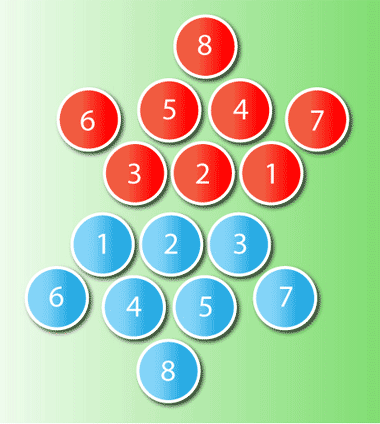Welcome to TalkRugbyUnion’s comprehensive guide on the scrum in rugby. The scrum is a fundamental aspect of the game, serving as a platform for intense physical contest and strategic maneuvering. In this guide, we will explore the intricacies of the scrum formation, the roles and responsibilities of the players involved, and the techniques employed to gain an advantage in this set-piece battle.
Whether you are a seasoned rugby enthusiast or a newcomer to the sport, this guide will provide you with valuable insights into the mechanics and strategies of the scrum. Join us as we delve into the world of scrummaging and unlock the secrets to mastering this vital component of rugby.
Overview
A scrum is short for “scrummage”, and it is a frequent and very important element of Rugby Union. Used as a way of restarting the game when the ball has gone out of play, the scrum consists of a formation of players whereby each team’s designated forwards bind together in three rows with the heads of those in the front row interlocking with those in the front row of the opposing team. The ball is then thrown into the gap between the two teams and both sides must compete to try and hook the ball and send it back with their feet. During the scrum, both sets of forwards push against the opposition to attempt to gain possession of the ball (referred to as ‘contesting the scrum’).
Forming the scrum
The scrum formation is often tricky to master for new players, as the positioning has specific rules and the pattern has to be just right. Each team’s eight forwards (known as the “pack”) are divided into three rows. The following diagram shows the relative positions of the players in the scrum:
As this shows, the front row usually consists of three players. These will often be the heaviest or stockiest players as they will have to bear more of the weight. The three people in the front row are made up of a hooker in the middle, with a prop on either side to support the hooker and contribute to the power of the pushing. One of these props is known as a tighthead prop and he goes to the right, while the other one is the loosehead prop and goes to the left. There should be no gap between the three and they should bind together very tightly. The rules for this are quite strict – failure to bind using the whole arm results in a penalty with the opposition being awarded a free kick. The technique for building the front row can be seen in this video.
On the second row of the scrum there must be only two players which line up directly behind the front row, positioning their heads in between the heads of the front hooker and props. These two players are the locks, as their role is to further tighten the gap between the players and ensure that the movement of the pack is as powerful as possible. A video of how to position the two locks can be seen here.
Finally, the last row contains three players, who yet again interlock their heads with those of the row in front of them. This row consists of a player known as a flanker‘ on either side of the middle player, as can be seen in this video.
What happens next?
When the formation is complete, both packs must approach each other and stand at arms length. The referee then gives the crouching order by saying “crouch”, at which point the two front rows must assume a crouching position whereby their backs are parallel to the ground with their heads and shoulders higher than their hips.
The referee then says “touch” and each front row player must touch the opposite player’s shoulder to make sure the two rows are not too far apart.
Next, the referee says “pause” to inspect the scrum and finally shouts “engage”, at which point the two sets come together, with the props holding on to their opponent prop’s jerseys.
The scrum halves of the team in possession of the ball then throws the ball into the gap between the two rows (respectively known as the put-in and the tunnel) and the hookers compete for possession with the entire pack jostling to make the task of hooking more difficult.
Further rules
There are many rules which deal with the scrum, largely due to safety concerns for those in the front row. For example, those in the front row must move forward square on rather than at an angle to avoid excess pressure on their necks. Also, a loose-head prop must not push into the opposite tight-head’s chest as this could cause them to be pushed put of the scrum. Penalties are issued if either of these two rules are broken. Front rowers must also never twist their bodies or do anything that may collapse the scrum (which could result in serious injury). The back row must also remain bound properly until the scrum has ended.
There are other rules that do not concern safety. For instance, when the ball is fed into the scrum, the scrum must be stationary and positioned parallel to the goal lines, otherwise a free kick is awarded to the non-offending team. For more information on the many regulations, check the main guide on the site.
A final note about safety
The scrum is one of the most dangerous parts of Rugby Union, especially for the hooker, as they experience the most pressure on their body. It is advisable to only take on this position if you are confident of your abilities and strengths when facing the opposition. Even for the rest of the pack, there is a risk of breaking your neck if the scrum isn’t coordinated properly. If unsure, players may use “uncontested” scrums where packs engage but do not push.

Scrum Positions
